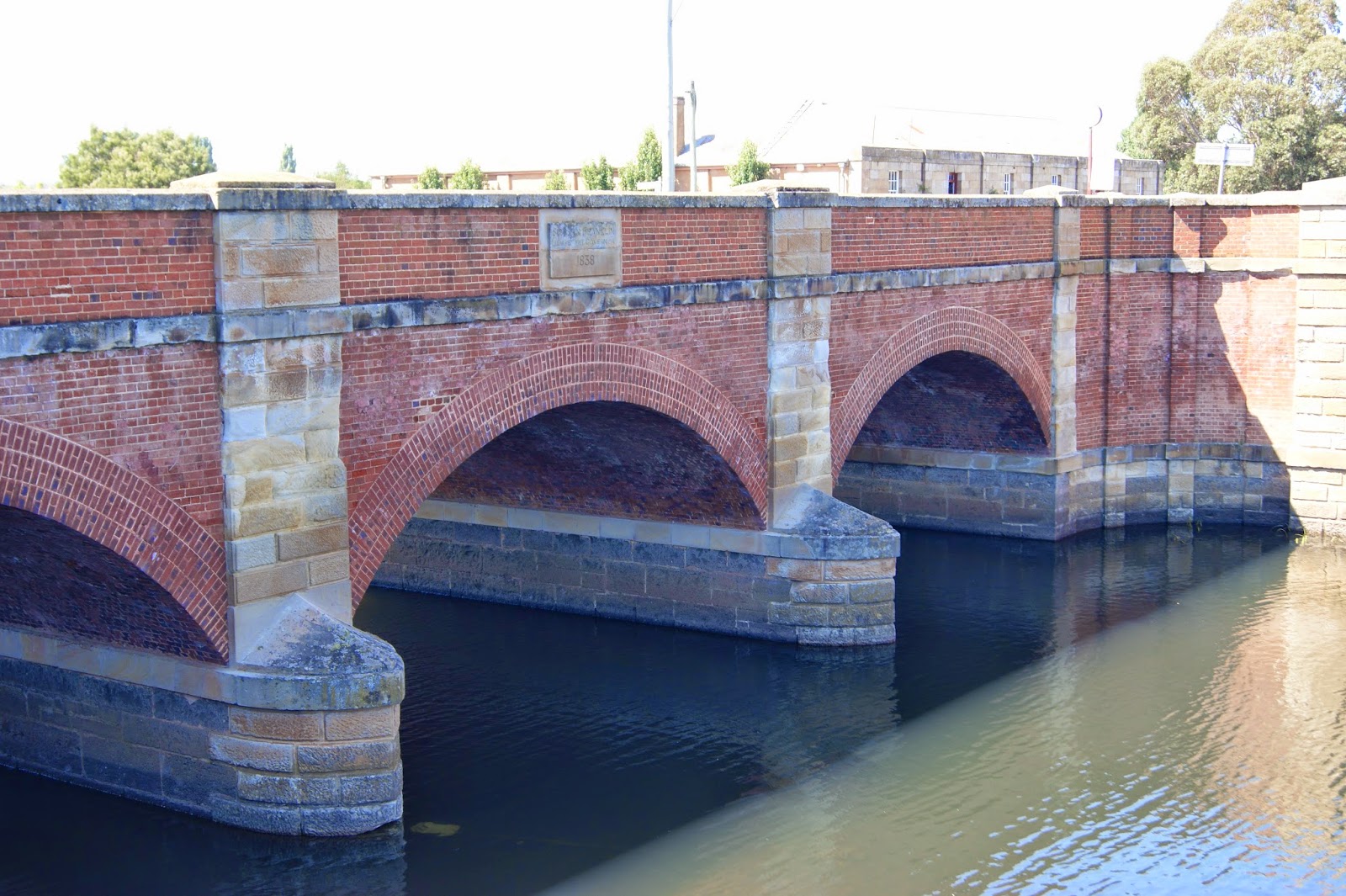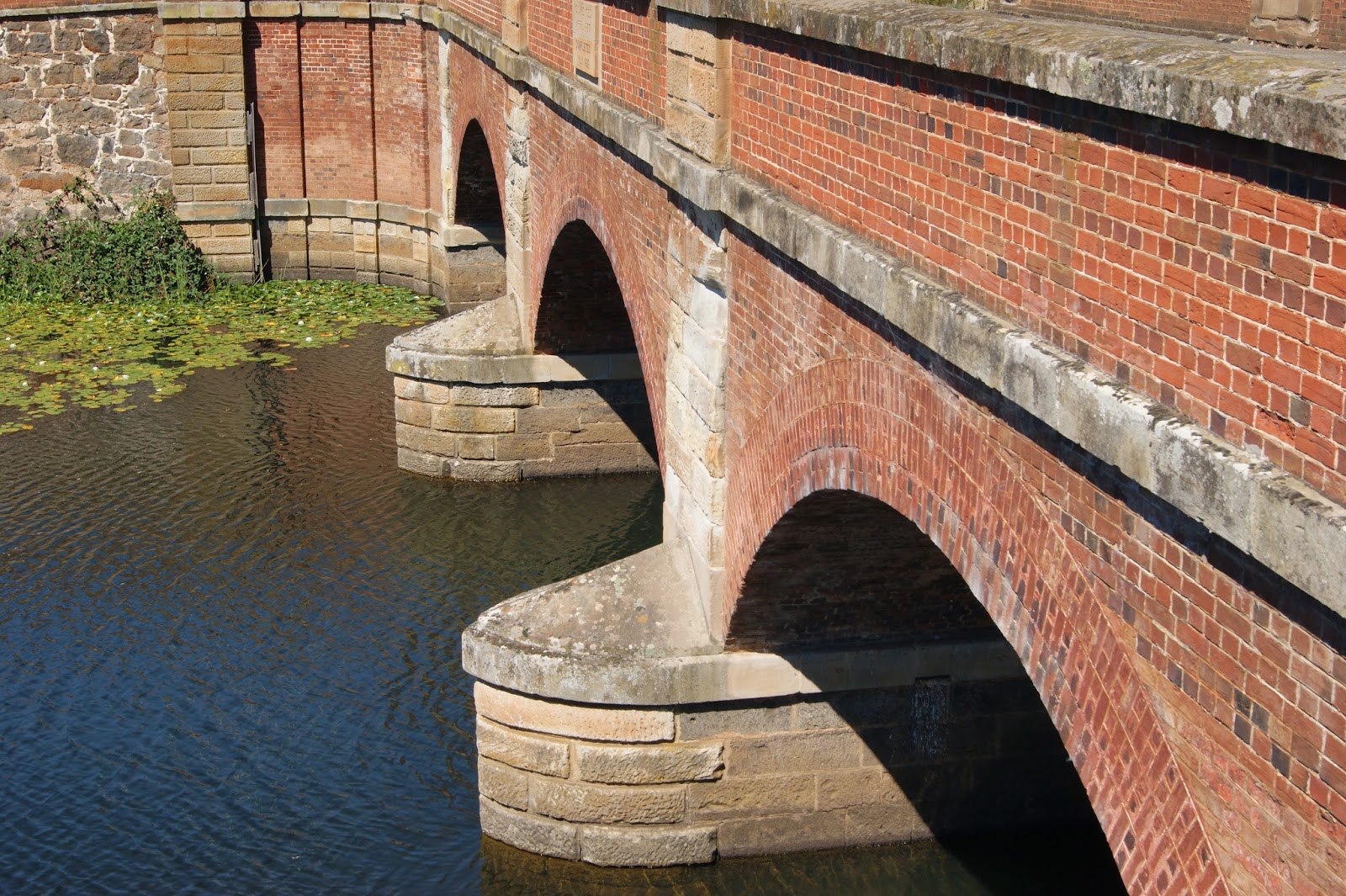The minutes of correspondence from the Lieutenant Governor at the time, however, refers to the current works already under construction in the district – a church, a bridge, a school house and a gaol at Ross and a church, a school house, a gaol and a parsonage to be erected in Campbell Town. He requested that an inspection of the current bridge be undertaken and a report prepared into whether it can be made safe by temporary repair for a year or two.
The records don’t tell us what happened between that time and the laying of the foundation stone for the new bridge. An article in the Hobart Town Courier of 28th Oct 1836 states that on the morning of the 21st, Lieutenant governor Arthur was met at Ross by a party of gentlemen on horseback and was escorted to the Police office where all surrounding gentry were assembled. He inspected the church and then proceeded to the site of the intended new bridge across the Elizabeth River, the first stone which was laid amidst the cheers of the assembled group.
The construction of the bridge was the responsibility of Captain Alexander Cheyne, the Director General of Public Works, whose name is recorded on a stone tablet in the parapet. In a report about the public works carried out in Campbell Town, he said in Sept 1838, “proper drawings were supplied and the works placed under the sub management of a practical man, Captain Forth, who has a taste for public works which in combination with sound judgment and keen observation constitutes a fitness for supervision of a highly effective kind”
On 9th Feb 1841, the Hobart Town Courier had much pleasure in calling attention to an address presented to Captain Forth by gentlemen of Campbell Town accompanied by a piece of plate “as a testimony of regard for his gratuitous exertions in the erection of the bridge and general improvements of Campbell Town."
The bridge is the oldest surviving brick arch bridge in Australia as well as the oldest bridge anywhere on the National Highway system and stands in good order and is fully functional today. Constructed by convict labour, it has three arches but although the piers of the bridge are of cut and dressed sandstone, the arches and parapets and the upper parts of the long walls which stretch up and down the river at both ends of the bridge, are built of red clay bricks which were originally made on site and which are now beautifully mellowed in color and have suffered less from the ravages of the weather than most of the bricks made at earlier dates. These red bricks give the bridge its name, The Red Bridge.
Four tablets have been placed in the parapets in addition to the one bearing Cheyne’s name. These are made of stone with incised lettering. The one facing upstream reads “Commenced April 1837, Completed July 1838” and the one facing downstream “Sir John Franklin, Lieutenant Governor 1838”. On the road side of the upstream parapet is carved “Launceston 41 Miles” and opposite “Hobart Town 76 Miles”. The bridges length along the road is approx 38 yards and the net width between the parapets is 28th feet.
It has needed very little repair work over the years and now carries over two million vehicles a year.
A wonderful testament to the skill of the convict laborers!
Main Text & Information Source:
“Convicts & Carriageways” – L. Newitt.










